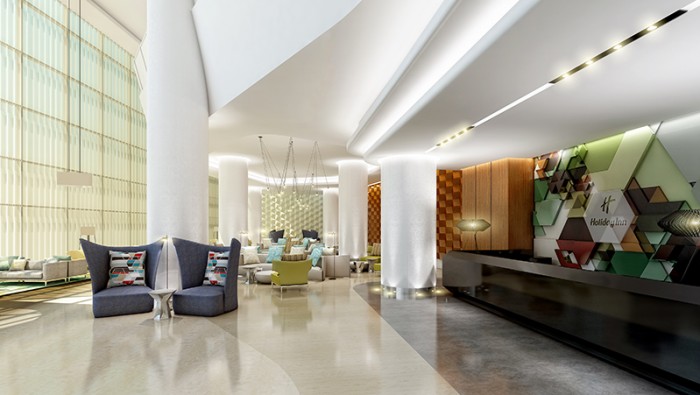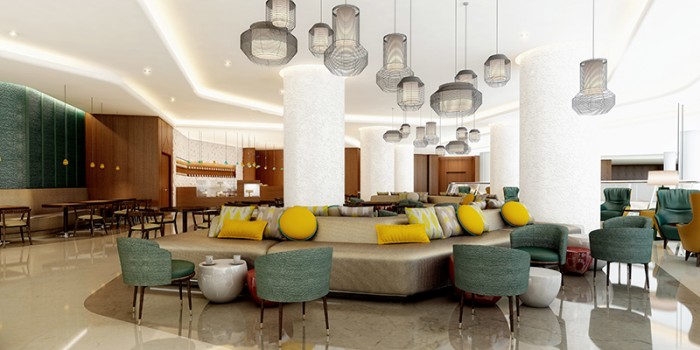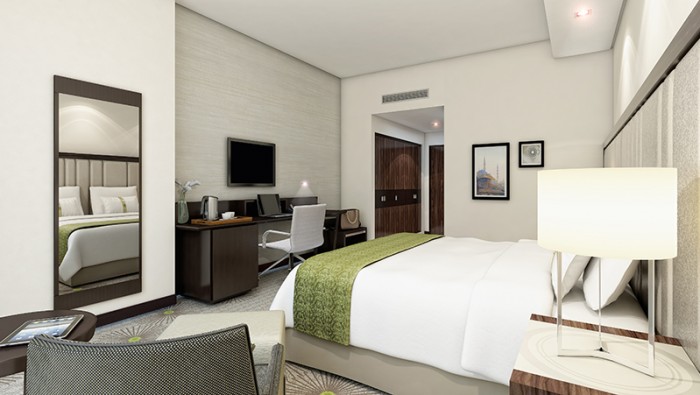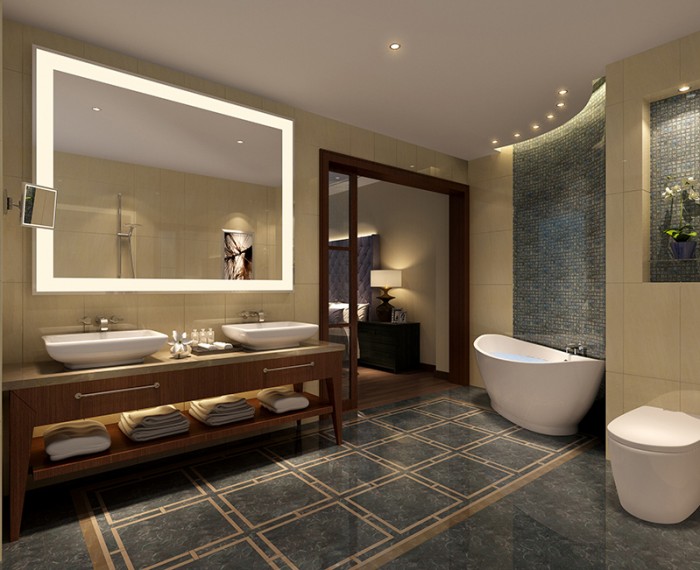Q&A with Andrew Linwood, Areen Design
 As Head of Areen Hospitality, Andrew is involved in and monitors all aspects of a project: from initial client contact, brief and concept development through to documentation and site installation. He has designed interiors for many of the world’s leading hotel operators including Hilton, Marriott, Radisson, Raffles, Swissôtel and Starwood.
As Head of Areen Hospitality, Andrew is involved in and monitors all aspects of a project: from initial client contact, brief and concept development through to documentation and site installation. He has designed interiors for many of the world’s leading hotel operators including Hilton, Marriott, Radisson, Raffles, Swissôtel and Starwood.
After gaining a degree in Interior Design in London and working in the UK and Europe, Andrew became Managing Director of regional Interiors group GTD in Hong Kong and Singapore. He went on to become Senior Project Designer with globally-renowned hospitality specialists Hirsch Bedner Associates in Singapore and London, designing luxury projects in Bangladesh, China, India, Indonesia, Malaysia, Singapore, Russia and Thailand. On his return to the UK he was invited to become an Associate at Richmond International – part of the Areen Group – and in 2008 he established Areen Hospitality.
As well as regularly featuring in hospitality publications, Andrew is a seasoned public speaker, frequently invited to leading industry events and exhibitions to share his unparalleled insight into design and the challenges facing developers and operators in the hospitality sector.
Areen Hospitality is currently working on projects in Europe, the Middle East, Africa, India, Central Asia and China.
What inspired you to get into design? And the hotel sector?
As a child I always enjoyed building things. My father was a builder and I was always on building sites, so I was interested in how things were made and the jump to design was a natural one. My father also gave me some good advice in saying that “the last thing you want is to go on site, and get your hands dirty. You would be much better off being the swanky architect that walks around in a pink shirt.” So that is precisely what I did!
I went into hotel design many years ago because there was a gap in my CV. I had already covered commercial, retail, healthcare and most of the other major sectors, so the next step was hotels. This sector instantly interested me as there is such a wide selection of different things to design. In just one hotel you might have the entrance lobby, a bar, two restaurants, a spa, a swimming pool, four or five different types of guest rooms, the presidential suite, and often a retail element as well. It’s the cross section of areas that you can work on that make hotels so interesting.
“It’s the cross section of areas that you can work on that make hotels so interesting.”
What have you seen as the biggest changes in the hospitality sector?
The biggest challenge to the hotel sector right now is OTA’s (online travel agents) like Trip Advisor or lastminute.com and Airbnb. They are taking a lot of money out of the hotel sector, but Airbnb is also opening new markets for people who may have not travelled before due to high accommodation costs. And if a decision is cost driven, the hotel sector cannot compete. However, there are other reasons people stay in in Airbnb’s and that is because you can feel part of the context of where you are staying. If you go and stay in someone’s apartment in the centre of Madrid, for example, you are going to be rubbing shoulders with the locals, not other tourists. So this has started to effect design.
“…the days of when you might check into a Hilton and you wouldn’t know if you are in Dallas or Dubai are long gone.”
We need to make our public spaces and our guest rooms more residential, more reflective of the context of where they are. So the days of when you might check into a Hilton and you wouldn’t know if you are in Dallas or Dubai are long gone, and you don’t do it by just hanging up pictures of colourful natives up on the wall. You have got to find another way of doing it, sometimes by working more closely with the local community to understand both their culture and heritage. This could even involve inviting street food vans to pull up outside and serve your guests, consequently resulting in the hotelier not needing to provide a restaurant.
What would you like to see change?
Well, I suppose I should reiterate what I have just said. Change must reflect how we as hospitality designers design our spaces as we have got to compete with these new markets. It is all about reflecting local context and creating a sense of place. For example, if you go to the new Hoxton hotel in Holborn it fits into the surroundings, it looks like a coffee shop on one side and a lounge bar on the other. And behind all of that there is a reception desk where you can check in. People that work in surrounding area are using it as a base for meetings and it is becoming a hub for the local area.
Are you seeing a major difference between budget and luxury in terms of evolution?
Yes of course here are huge differences between budget and luxury markets. The budget market is growing everywhere but it is important to remember that when you are talking about the hotel market, you cannot just think about Shoreditch, London or New York. There is Africa, Asia and Russia where the markets are not nearly as sophisticated as they are in western cities and guests demand different things. Although limited service hotels are growing in the west, that is not the case in developing markets. If you are someone who has been newly promoted in India and your company sends you travelling, you are not going to want a sandwich from a machine, you are going to want a sit down meal, a porter to carry your bag, so expectations are very different. What is acceptable in Shoreditch is not acceptable in Delhi.
“What is acceptable in Shoreditch is not acceptable in Delhi.”
With the luxury side of things, I personally go to Dubai a lot and there is an abundance of luxury hotels, and plenty of people that want to pay for it.
How has the hotel evolved in recent years?
Well the bathroom has become much more important. In our homes, bathrooms have become more design led and people expect a certain standard when they stay in a hotel, especially when they are paying £100-200 a night. So the bathroom has evolved massively. The rooms themselves have become far more residential and these days you will find that they look how you would like your ideal front room to look. The lighting is different, the floor finishes are generally softer and the artwork has evolved, even within the big chain hotels like a Hilton. In summary I’d simply say the key changes to say 10 years ago are in how we design the bathroom areas and how we relate our overall design to the area and its heritage where we are working.
We shall be exploring how the guest suite has evolved in even more detail during January, so keep your eyes peeled.











Comments
Now that I consider about it, that is telling proof of the priorities
he hoped we would understand, I guess.